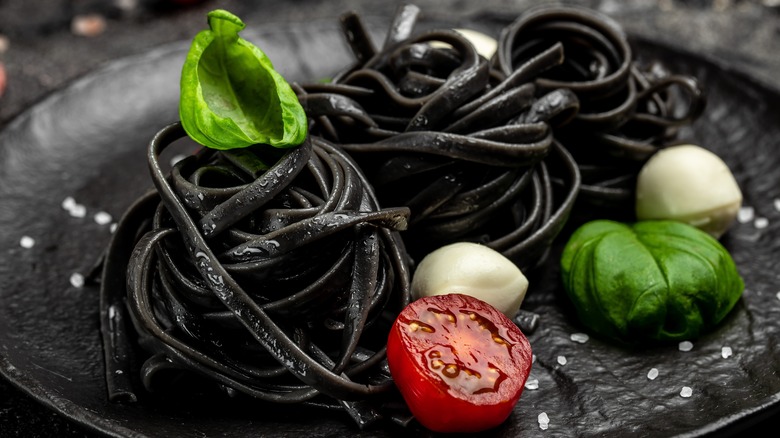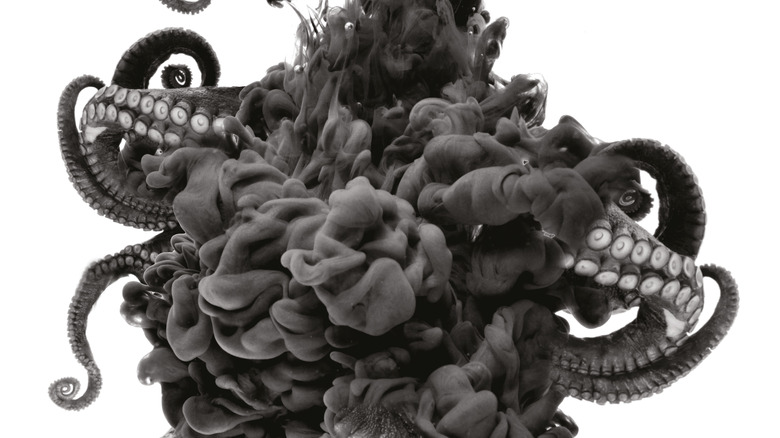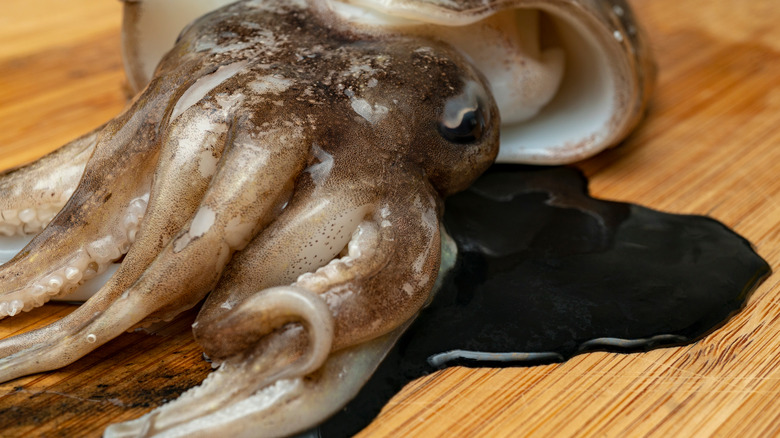What Is The Flavor Of Squid Ink And Can You Taste It In Pasta?
The vast, dark expanse of the sea can be terrifying, but many intrepid culinary innovators have braved the ocean blue to reel in delicious aquatic animals from the depths below. Indeed, the characteristics of some of these ocean-dwellers remind us of how different their ecosystem is from our own — and in turn, it affects how we approach harvesting them (hopefully in an ethical manner) and how we eat them. Uni, a popular piece of sushi renowned for its subtly sweet flavor profile, has a spiky exterior, which means it's necessary to contend with that before you enjoy it as a delicacy. Japanese fugu, or puffer fish, might be a fine-dining status symbol, but eat carefully — if prepared improperly, it can issue a fatal dose of neurotoxin.
There are hundreds of different species of squid in the ocean, many of which appear on the plate. While a plate of fried calamari might be on the adventurous side for many diners, that isn't the only way that squid can be included in your next meal. A little squirt of squid ink could be just the thing to take your pasta to the next level.
A defensive tool or a delicious food?
Cephalopods, the scientific class of aquatic animals that includes many mollusks, including squids, are born with the ability to project ink from a special sack, distracting potential predators and allowing the cuttlefish in question to escape. In a bizarre evolutionary twist, this ink is actually edible. The act of eating ink may not sound very appetizing, However, squid ink has a complex flavor, and is highly sought-after in certain culinary circles.
While facefuls of cephalopod ink have flummoxed undersea carnivores for millions of years, chefs have discovered that the squid secretion has a subtle, briny flavor profile, akin to that of many fresh kinds of seafood, but also carries a certain complexity. Squid ink can be the secret ingredient that adds umami to your next dish, and it also has the added effect of making your meal take on the striking black color of the deep sea.
Squid ink's role in cuisine
When you add squid ink to pasta, it takes on a deep, dark hue, akin to that of the sea floor. This allows chefs to create stunning black noodles, like those in this squid ink bucatini. While the sight of black pasta might make diners worry that a dish will be too pungent, squid ink, if doled out in moderation, will lend a mild fishy flavor to your pasta without overwhelming it.
Noodles are far from the only food that chefs have infused with a splash of squid ink. In Spain, two popular preparations that pair squid with its own jet-black secretion are chipirones en su tinta, which consists of and essentially translates to cephalopod sauteed in its ink, a dish that uses squid ink to dye a bed of rice black.
Squid ink dishes can be both striking and flavorful, but it's also possible that squid ink is the next big health food trend. It is imbued with a slew of healthy chemicals, including several essential amino acids and melanin. Furthermore, climate change has resulted in exploding squid populations, so you may be seeing more black pasta as time goes on.


